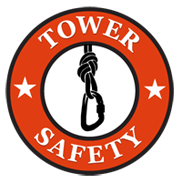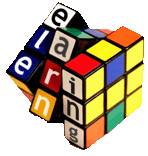“The Scaffold Industry Association (SIA) serves as a secretariat for the ASC A92 Main Committee. These standards establish criteria for the manufacturers as well as aid the manufacturers, dealers, owners, users, and operators of MEWP equipment to understand their various responsibilities. “ The training standards in the new ANSI 92.24 now require certification for workers who are near a MEWP (Mobile Elevating Work Platform) on the job site, including Supervisors, Occupants, and Operators. Updates in the standard include both classroom and practical training to understand the following:
Safety rules, operation/function, placards, decals-start inspections, stability, hazards, weather hazards, controls, PPE, pre-inspections, and applicable manufacturer standards.
Another change to the ANSI/SAIA 92.24 is the addition of the word “Occupant,” which includes the definition and their new set of standards. “Occupants” are required to have a basic level of knowledge and training to work safely on Aerial Lifts. However, the occupant does not have the authorization to operate the controls at any time, except in an emergency. At least one worker must have the knowledge to operate the controls in an emergency if the operator cannot.
Throughout the years, the wireless industry has an estimated half a dozen deaths involving aerial lift. This includes numerous rescues, tip-overs, and physical damage to both the tower and Aerial Lift due to operator issues. Data from the U.S. Bureau of Labor Statistics show the leading causes of death involving an Aerial Lift are:
- Electrocution
- Fall
- Tip-over
- Crushed (Caught in between)
- Collision (Struck by/Against)
 Due to the average of 300 deaths worldwide, 35 in the US a year in MEWPMEWP’s, the ANSI/SAIA A92 design has made the following changes for manufacturers:
Due to the average of 300 deaths worldwide, 35 in the US a year in MEWPMEWP’s, the ANSI/SAIA A92 design has made the following changes for manufacturers:
- Load Sensing
- Will measure the weight of the platform
- Will stop elevating if overloaded
- Dual capacities – 1) Within the appropriate load envelope 2) Weight in the platform
- Stop Elevating if overloaded
- Tilt Sensing
- Wind Exposure – If outdoor or exposed to wind must sustain 28 MPH
- Guardrail Heights will now be 43.5 (previously 39.5)
- Gates with Toeboard
- Consistent controls
Aerial Lift with Fall Protection according to OSHA regulations 1926.502d(16)(iii) requires anchorages to “be rigged such that an employee can neither free fall more than 6 feet, nor contact any lower level.” Most of the wireless industry uses a 6-foot lanyard with a shock absorber. So, are we using the correct lanyard for an Aerial Lift? The ANSI/SIA A92.5-2006 Standard for boom-supported elevating work platforms establishes the responsibilities of users, operators, and owners. Per ANSI z359 the use of fall protection provides a Fall Protection rescue plan with the correct Aerial Lift. The employer must always have a rescue plan in place, and ANSI/SAIA best practices recommend the following:
 1) Fall Restraint using a short lanyard – This does not cause the occupant to be thrown from the platform but to remain with the work platform
1) Fall Restraint using a short lanyard – This does not cause the occupant to be thrown from the platform but to remain with the work platform
2)Fall Restraint/Arrest using a lanyard with an adjuster – always keep the shortest length possible for fall restraint. When a lanyard is used to be used with shock absorber, it must be incorporated into the lanyard with an adjuster.
3) Fall Restraint/Arrest Using a Double-leg Lanyard – A short lanyard would be used as fall restraint and the Fall Arrest double-legged lanyard when used will not allow the worker to come in contact with a lower surface or free fall of more than 6’.
4) Fall Restraint/Arrest SRL – The SRL must be manufactured approved with specific MEWP’s as OSHA requires that all SRLs Limit a free fall to 2’ or less.
 To help with fall protection, a new design feature for fall protection outside the platform helps the occupant work safer by JLG and Genie. The JLG Bolt-On External Fall Arrest System allows the worker to safely leave the aerial lift with a 6’ lanyard yet remain tethered to the platform. Genie has created a Traveling Fall Arrest Anchor System that allows the worker and his tools plus equipment to exit while attached with a Fall Arrest/Restraint lanyard to the platform. However, one person must not exceed 300 lbs. Only 1 person may be able to work outside the platform and a worker trained in the operation of the Aerial lift must always remain on the ground and near the controls. There are times when a wireless worker may need to transfer from the platform to a tower. OSHA guidelines when transferring to the platform requires entering/exiting through the gate only and within 1 foot of a safe and secure structure. 100% tie-off utilizing two lanyards is also required in this situation. One lanyard must be attached to the platform with the second lanyard attached to the structure. The lanyard connected to the platform must not be disconnected until the transfer to the structure is safe and complete.
To help with fall protection, a new design feature for fall protection outside the platform helps the occupant work safer by JLG and Genie. The JLG Bolt-On External Fall Arrest System allows the worker to safely leave the aerial lift with a 6’ lanyard yet remain tethered to the platform. Genie has created a Traveling Fall Arrest Anchor System that allows the worker and his tools plus equipment to exit while attached with a Fall Arrest/Restraint lanyard to the platform. However, one person must not exceed 300 lbs. Only 1 person may be able to work outside the platform and a worker trained in the operation of the Aerial lift must always remain on the ground and near the controls. There are times when a wireless worker may need to transfer from the platform to a tower. OSHA guidelines when transferring to the platform requires entering/exiting through the gate only and within 1 foot of a safe and secure structure. 100% tie-off utilizing two lanyards is also required in this situation. One lanyard must be attached to the platform with the second lanyard attached to the structure. The lanyard connected to the platform must not be disconnected until the transfer to the structure is safe and complete.
The wireless industry has numerous stories about using an Aerial lift for rigging antennas to platforms, along with personnel, tools, and equipment. Unfortunately, without understanding the combined weight plus the wind factor, this has caused issues of overloading the lift, causing accidents. MEWP’s have a specific capacity rating for the number of allowable workers a platform allows; it is called RWL (Rated Working Load). Understanding the working envelope and the Pythagorean Theorem for working vs platform height will help with tip-overs and overloaded MEWP’s.
Become Trained.
Tower Safety & Instruction proudly trains to the ANSI/SAIA 92.24 Aerial Lift standards. Our Genie 85 is located at our training facility in Phoenix, AZ.
We also work closely with Sunbelt rentals https://www.sunbeltrentals.com/ to ensure safety to their rental customers.
Jeff Stachowiak
Sunbelt Rentals, Inc.
Director of Safety Training









